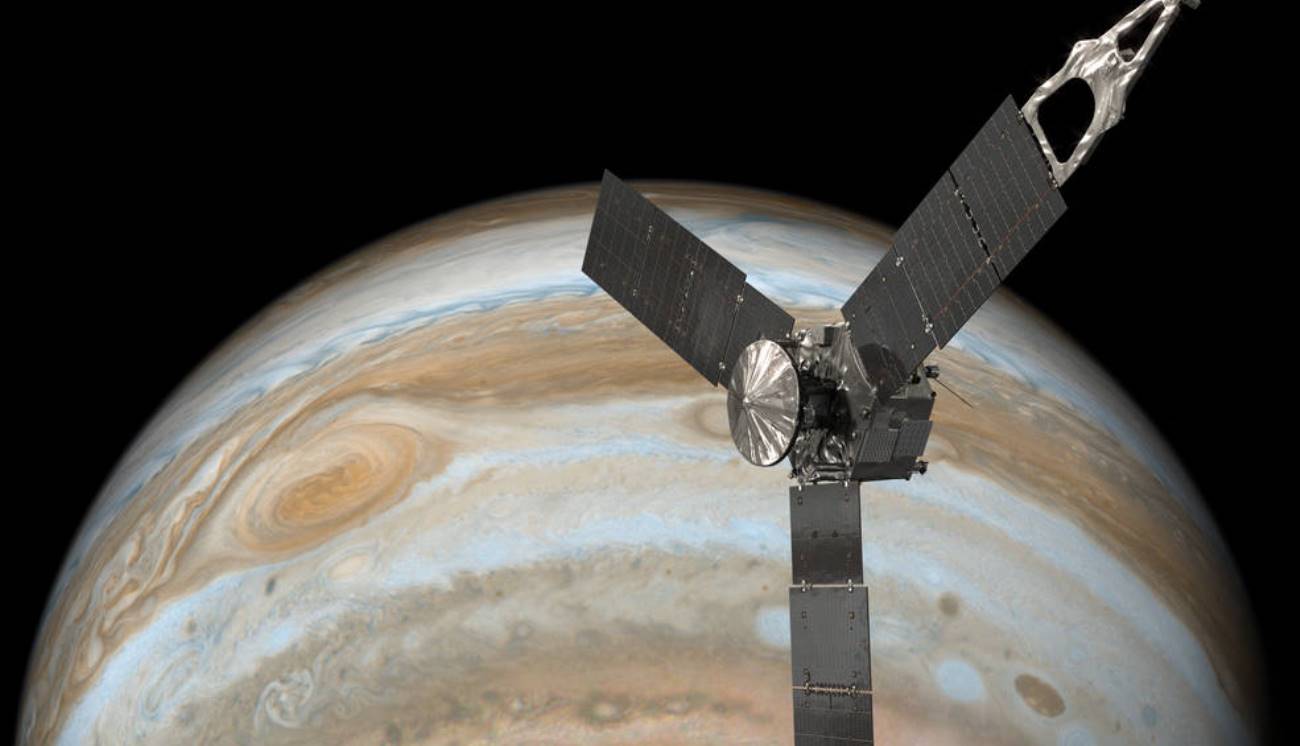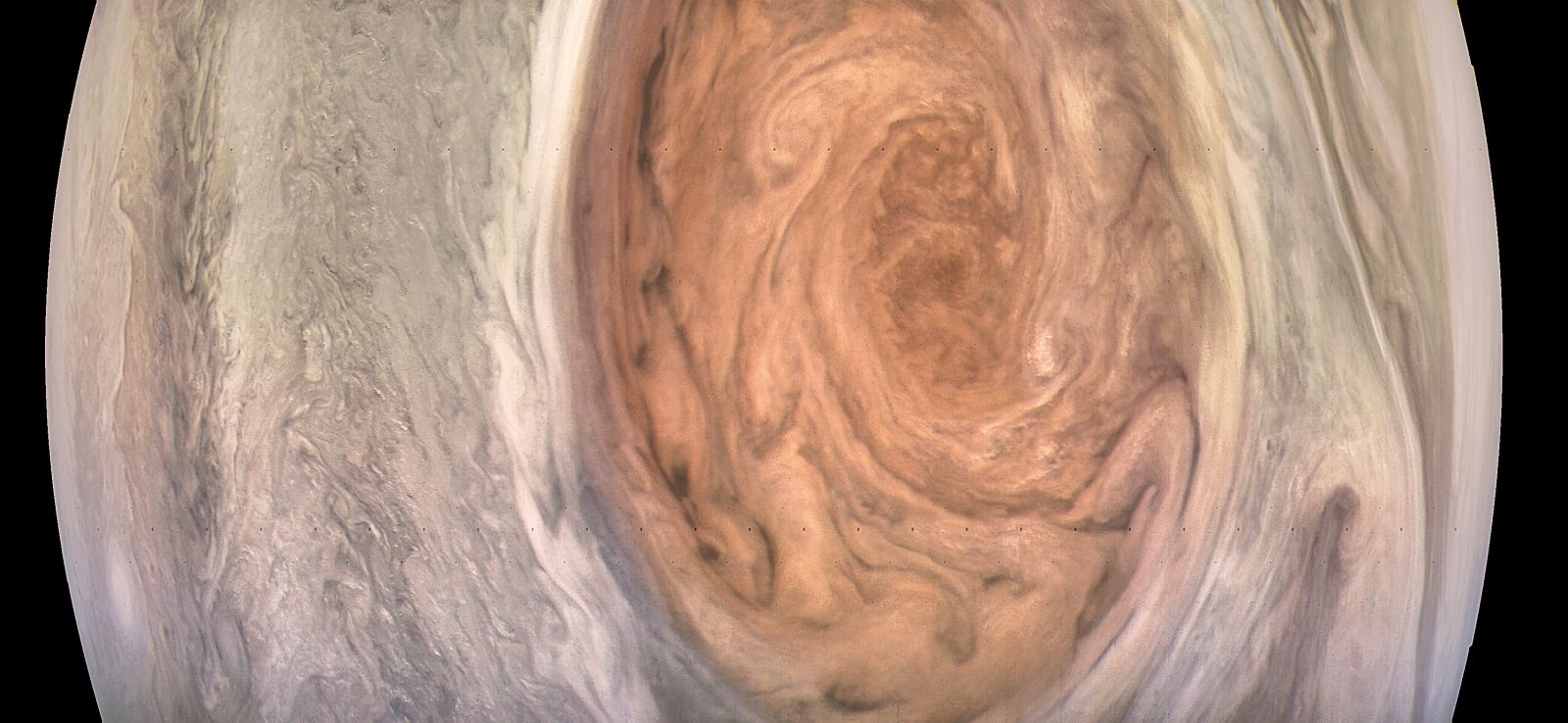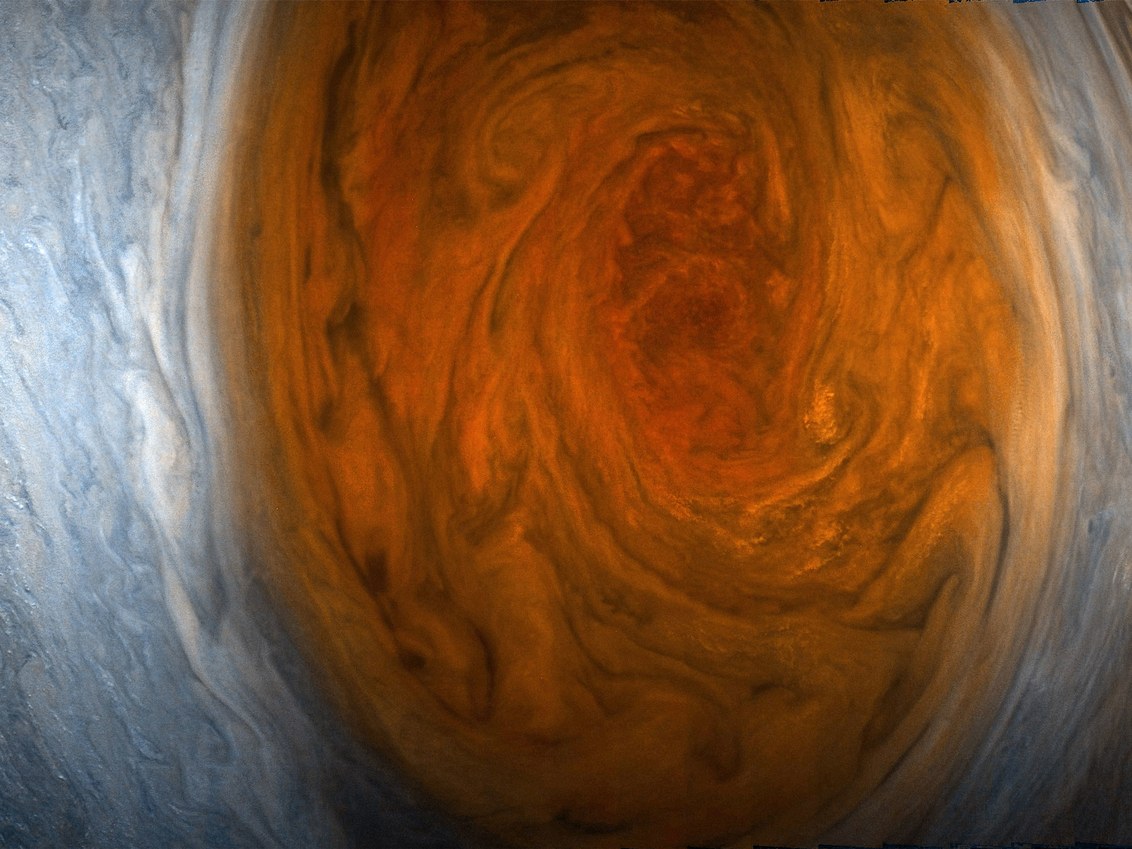 Juno probe on the background of Jupiter and the Big Red Spot. Source: NASA / JPL-Caltech / SwRI / MSSS / Kevin Gill
Juno probe on the background of Jupiter and the Big Red Spot. Source: NASA / JPL-Caltech / SwRI / MSSS / Kevin GillThe big red spot (
BKP ) is an atmospheric vortex on Jupiter. Experts say that this atmospheric phenomenon is a zone of high pressure, which creates an anticyclonic storm on the gas giant. The spot is not static, it periodically changes in size, and its color changes. The BKP has been observed for several centuries. It moves parallel to the equator of the planet. The spot size is 40 thousand kilometers long and 13 thousand kilometers wide. The wind blowing here is very strong, reaching speeds of up to 500 kilometers per hour.
The red color of the spot has not yet received an explanation. There can be many reasons, and one of them is the presence of chemical compounds, including phosphorus. There are other spots of different colors on Jupiter, but scientists are most interested in the Big Red Spot, which is currently considered the largest hurricane in the solar system. The other day, the Juno space probe sent a series of high-resolution OPF photographs that may help clarify the nature of the phenomenon and the reason that this hurricane has been around for decades.

Team probe Juno posted images on the page of the project. They are made using the camera apparatus,
JunoCam . Images are not processed, so NASA encourages everyone to experiment with images. Their resolution is 15 kilometers per pixel.
In the near future, experts hope to get even better images of Jupiter, accompanied by data from various Juno sensors. All this information will allow to answer a number of important questions regarding the spot, including the cause of its occurrence. The data transmitted by the Juno systems will also help to better understand how such a large atmospheric element can function for hundreds of years and where the power source is the OPF.
The photos were taken on July 10 from a distance of 9010 kilometers from what is considered the "surface" of Jupiter (as far as can be understood, we mean the upper edge of the atmosphere). At the time of photographing the device was right above the spot, and therefore managed to get such high-quality shots. “For hundreds of years, various scientists have been watching him, wondering and discussing the nature of the Big Red Spot,” said Scott Bolton, head of the Juno project at the South-West Research Institute in San Antonio. “Now we have the best ever photos of this storm. Analysis of the data, not only the images, will take some time, but it will shed light on the past, present and future of the Big Red Spot. ”
The stain was discovered by Jove Cassini in 1665. He has been continuously monitored since 1830, and more or less detailed study began in 1879. Surely, it can be said that the stain has existed continuously for 187 years. Previous observations were fragmentary and incomplete, but if observers of the past saw the same atmospheric phenomenon, then, most likely, a hurricane has existed for the last 350 years. Interestingly, before the Voyager flight, astronomers believed that the spot had a firm nature. Needless to say, science is developing very rapidly.

On Jupiter, sometimes hurricane collisions occur. One such collision took place in 1975, then the OPF became less bright, and this decrease in brightness, the blanching of the spot, lasted for several years. During the formation of one of the rather large hurricanes, scientists observed between 1998 and 2000. Then three smaller hurricanes merged, which were monitored for 60 years. Initially, the new education was white, but then, in February 2006, it acquired a red-brown color, so it was called a small red spot.
There is a “spot” on another giant planet of the solar system. It's about Saturn, a huge storm which surprises not only with its size, but also with its shape. The fact is that it is hexagonal. This element changes its color over time - from blue to golden. It was opened not so long ago, about 30 years ago. Its diameter is not much smaller than that of the OPF of Jupiter, and is 32,000 km. Depth - at least 100 kilometers.